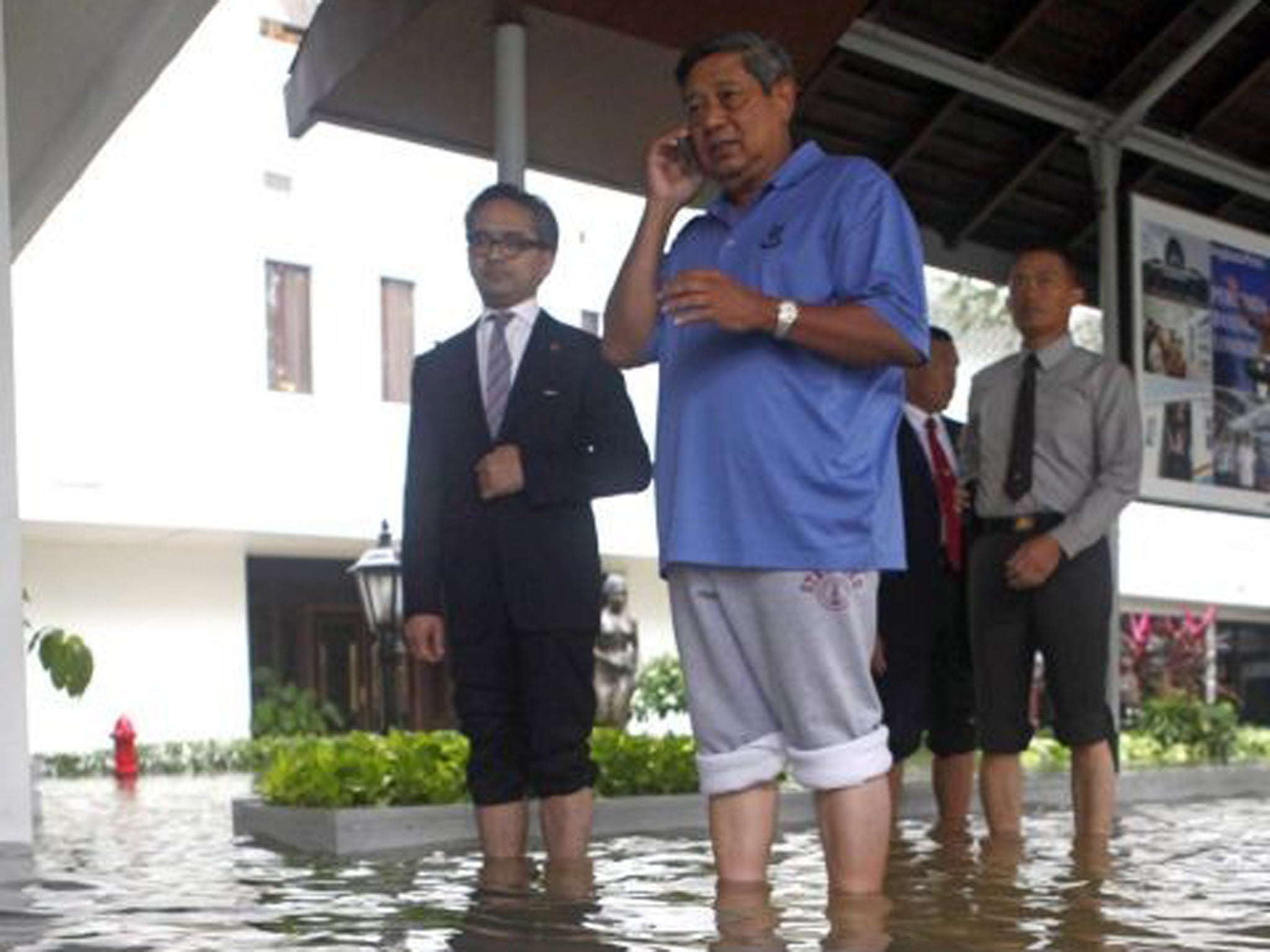Floods paralyse Indonesian capital of Jakarta

Your support helps us to tell the story
From reproductive rights to climate change to Big Tech, The Independent is on the ground when the story is developing. Whether it's investigating the financials of Elon Musk's pro-Trump PAC or producing our latest documentary, 'The A Word', which shines a light on the American women fighting for reproductive rights, we know how important it is to parse out the facts from the messaging.
At such a critical moment in US history, we need reporters on the ground. Your donation allows us to keep sending journalists to speak to both sides of the story.
The Independent is trusted by Americans across the entire political spectrum. And unlike many other quality news outlets, we choose not to lock Americans out of our reporting and analysis with paywalls. We believe quality journalism should be available to everyone, paid for by those who can afford it.
Your support makes all the difference.Indonesia's army deployed rubber boats in the capital's business district today to rescue people trapped in floods that inundated much of the city of 14 million people. The president was pictured standing in water up to his shins — his trousers rolled up — at the palace waiting for the arrival of Argentina's leader on a state visit.
The floods were the most widespread to hit Jakarta in recent memory. Authorities said at least four people were killed and 20,000 evacuated. Many more homes were inundated following around five hours of heavy overnight rain that coursed through rivers already swollen by a long monsoon season.
Few areas in the city were spared, from wealthy suburbs to riverside slums and gleaming downtown business blocks. Offices and schools were deserted and traffic ground to a halt. The international airport was operating normally, but travelers were finding it hard to get there.
"This is horrible," said Yanitha Damayanti, a bank teller stranded downtown. "For the first time in my life, downtown Jakarta has flooded."
The city has long been prone to floods, but successive governments have done little to mitigate the threat.
Deforestation in the hills to the south of the city, chaotic planning and the rubbish that clogs the hundreds of rivers and waterways that crisscross the city are some of the factors behind the floods. The city's vulnerability exposes the country's poor infrastructure even as it has posted impressive economic growth in recent years.
President Susilo Bambang Yudhoyono and the country's foreign minister were pictured standing in water up to their shins at the presidential palace waiting for the arrival of Argentina's President Christina Kirchner, who is on a state visit. The meeting of the two leaders apparently went ahead.
"I have no problem with the palace being flooded, "Yudhoyono said. "The most important thing is the people are protected."
In some places, water levels were up to 2 meters (6 1/2 feet) high. Seen from above, the main road through the heart of the city resembled a muddy river. Even as authorities struggled to rescue those trapped and provide them food and shelter, some were thinking of the economic cost.
"This is an extraordinary disaster," said Syamsuddin Basri. "I had to cancel many important business deals."
AP
Subscribe to Independent Premium to bookmark this article
Want to bookmark your favourite articles and stories to read or reference later? Start your Independent Premium subscription today.
Join our commenting forum
Join thought-provoking conversations, follow other Independent readers and see their replies
Comments